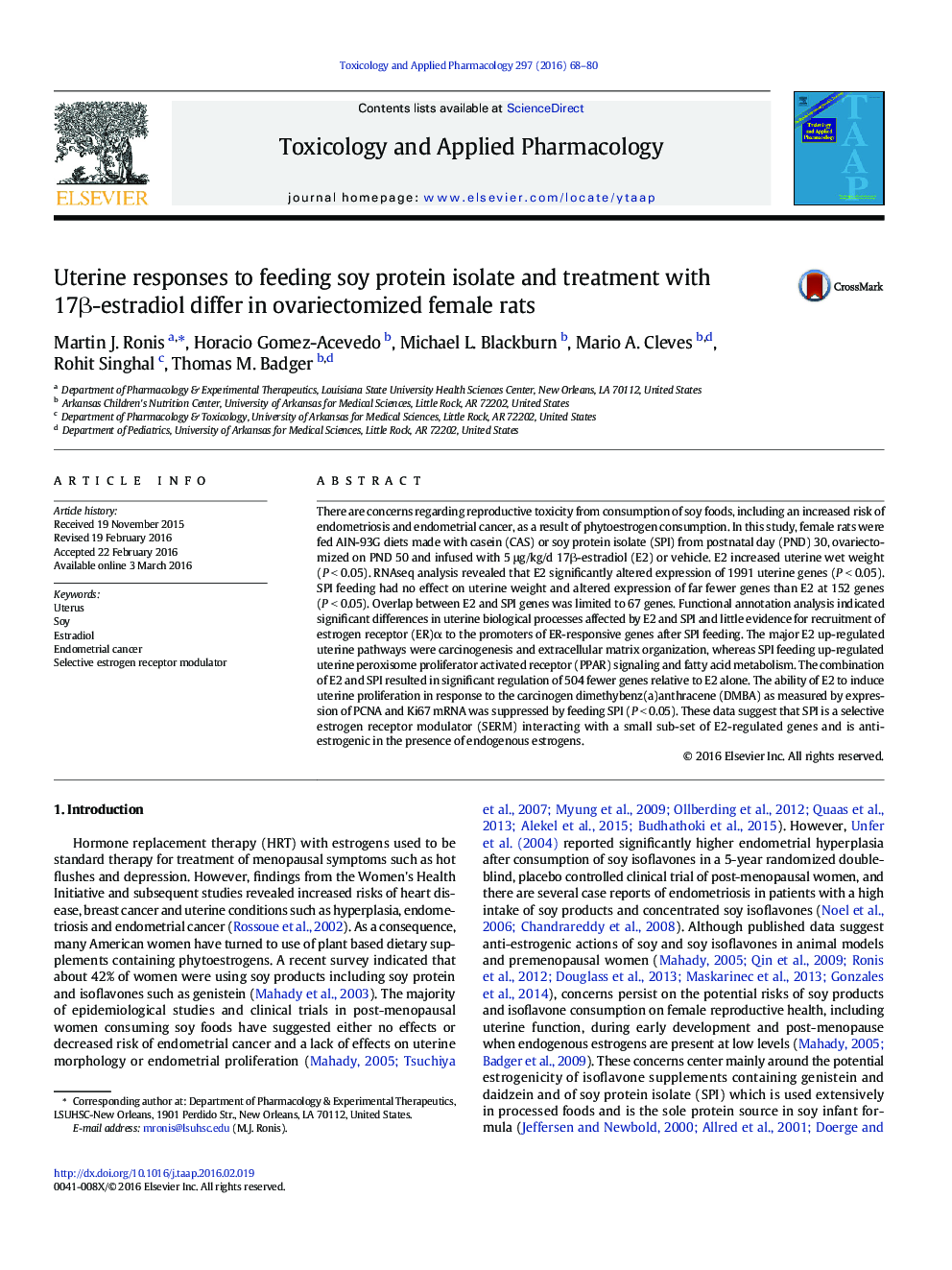| کد مقاله | کد نشریه | سال انتشار | مقاله انگلیسی | نسخه تمام متن |
|---|---|---|---|---|
| 2568167 | 1561165 | 2016 | 13 صفحه PDF | دانلود رایگان |

• Concerns exist regarding risk of uterine cancer from consumption of soy products.
• These concerns are related to potential estrogenicity.
• Estradiol and soy protein isolate effects on uterine gene expression were compared.
• Soy acts as a selective estrogen receptor modulator not a weak estrogen.
• Soy feeding blocked uterine proliferation after treatment with estradiol and DMBA.
There are concerns regarding reproductive toxicity from consumption of soy foods, including an increased risk of endometriosis and endometrial cancer, as a result of phytoestrogen consumption. In this study, female rats were fed AIN-93G diets made with casein (CAS) or soy protein isolate (SPI) from postnatal day (PND) 30, ovariectomized on PND 50 and infused with 5 μg/kg/d 17β-estradiol (E2) or vehicle. E2 increased uterine wet weight (P < 0.05). RNAseq analysis revealed that E2 significantly altered expression of 1991 uterine genes (P < 0.05). SPI feeding had no effect on uterine weight and altered expression of far fewer genes than E2 at 152 genes (P < 0.05). Overlap between E2 and SPI genes was limited to 67 genes. Functional annotation analysis indicated significant differences in uterine biological processes affected by E2 and SPI and little evidence for recruitment of estrogen receptor (ER)α to the promoters of ER-responsive genes after SPI feeding. The major E2 up-regulated uterine pathways were carcinogenesis and extracellular matrix organization, whereas SPI feeding up-regulated uterine peroxisome proliferator activated receptor (PPAR) signaling and fatty acid metabolism. The combination of E2 and SPI resulted in significant regulation of 504 fewer genes relative to E2 alone. The ability of E2 to induce uterine proliferation in response to the carcinogen dimethybenz(a)anthracene (DMBA) as measured by expression of PCNA and Ki67 mRNA was suppressed by feeding SPI (P < 0.05). These data suggest that SPI is a selective estrogen receptor modulator (SERM) interacting with a small sub-set of E2-regulated genes and is anti-estrogenic in the presence of endogenous estrogens.
Journal: Toxicology and Applied Pharmacology - Volume 297, 15 April 2016, Pages 68–80